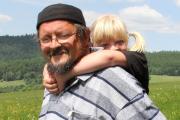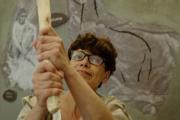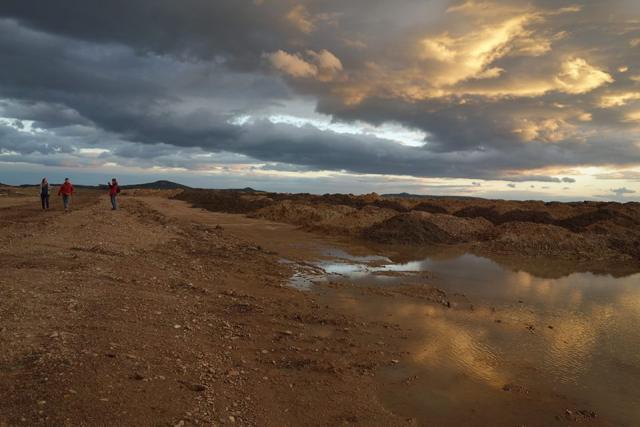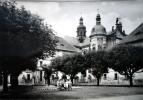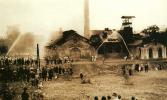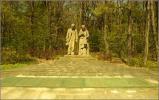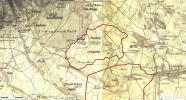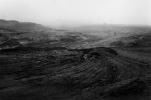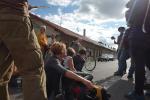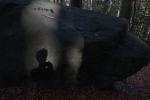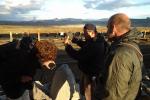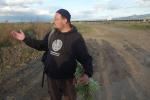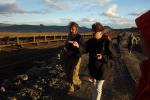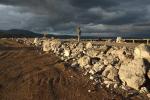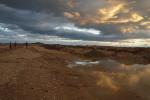Altered Landscape, Lives and Memory: A walk from Osek to the sites of the vanished villages of Libkovice and Hrdlovka
Walking could turn out to be the best way to understand a place. Even the natural sciences and the humanities aim to explore the countryside, but they use different methods. For example, the foundations of a spatial archeology were laid right here, because of the extraordinary happenstance of removing the entire surface of the soil in such a broad scale, thereby discovering ancient settlements. You need not be a scientist to understand what is going on here: “How many times they have changed the course of the river Bílina?”
Together with the archaeologist Petr Meduna, art historian Radoslava Schmelzová and biologist Jiří Sádlo we will visit several locations around the village of Libkovice (Liquitz), today merely a small fragment of a brutally exploited urbanized territory. Libkovice was the last coherent urban settlement destroyed because of a planned expansion of a coal mine in 1992. However, the mining there has never begun--and maybe never will. What remains is a devastated landscape, people's lives and historical memory. A short recapitulation after twenty years: How is this different from the fate of Lidice? The landscape of the lignite basin of northwestern Bohemia still belongs among the most devastated regions in Europe. Regardless who is in power, it seems.
The Landscape of Eternal Unrest
Today Libkovice is part of Mariánské Radčice. The cadaster of Libkovice has been systematically studied by archaeologists since the 1970s. Along with records of earlier findings, the archaeological record provides a detailed picture of the development of human settlements since the Neolithic Age, through its entire history. Libkovice itself was founded in the early Middle Ages (the oldest documents are from the 9th-10th centuries.) Since 1240, it has belonged to the Osek Monastery.
Our walk through this “sad country” (as it was once called by the famous photographer Josef Sudek), starts in the architecturally unique Osek Monastery complex, founded by a local noble family named Hrabišic at the end of the 12th century. The Cistercians moved here from the (now defunct) monastery Mašťov in Doupovské mountains. The development of the monastery in the 14th century drew income from the vast estates and from the silver and tin mines of the Ore Mountains .
The monastery was rebuilt in the spectacular way of the high Baroque (1712-1718) by an architect of Italian origin named Octavio Broggio (1670-1742), who was active in the Litomeřice region. The monastery barely escaped the secularization of Joseph II, and in the 19th century, with the process of industrialization and coal mining, it became, temporarily, the site of mayor’s office for the town of Osek.
We will visit the monument to the victims of the Nelson mine disaster, which will recall a post-industrial “ghost story”. We will climb the quartzite rock outcropping called teh Salesius heights, named after the Osek abbot Salesius Krügner, who was a lover of nature in the Ore Mountains.
Biologist Jiří Sádlo will ask questions about how the local landscape is being restored: Can we call it still nature or not? How does it fit in with the ancient landscape of the Ore mountains? We will pass through the village of Lom, today a small town with mining colonies and a unique atmosphere.
Panoramic vistas over the lignite mines can be interpreted as a parable about anthropocentrism, egocentrism, and the dark sides of humanity.
Meeting point: Information Centre of the Osek monastery at 10am.
Duration: all-day walk (max. 15 km).
Recommended equipment: wear sturdy shoes, bring snacks (there will not be a chance to buy food until the final stop in Mariánské Radčice).
For more information please contact Dagmar Šubrtová: dasas@email.cz
Jiří Sádlo, RNDr.
Jiří Sádlo, RNDr., CSc., is a biologist with a keen interest in botanical sociology, the dynamics of the post-rustic landscape, non-natural biotopes and caenogenesis. Sádlo is the author of numerous essays and, among others, the book Empty Earth. …
Petr Meduna, Ph.D.
Petr Meduna, Ph.D., is an archeologist and historian. He graduated from the Charles University in Prague, and worked at the Archaeological Institute in Most (1986-1996), and later in the Archaeological institute in Prague. He is especially interested in the Middle Ages, and the relationships between the social and natural sciences. …
Mgr. Radoslava Schmelzová
Radoslav Schmelzová, Mgr., studied art history and cultural heritage management at the University of Ostrava and the theory and history of design and new media at the Academy of Arts, Architecture and Design in Prague. …
